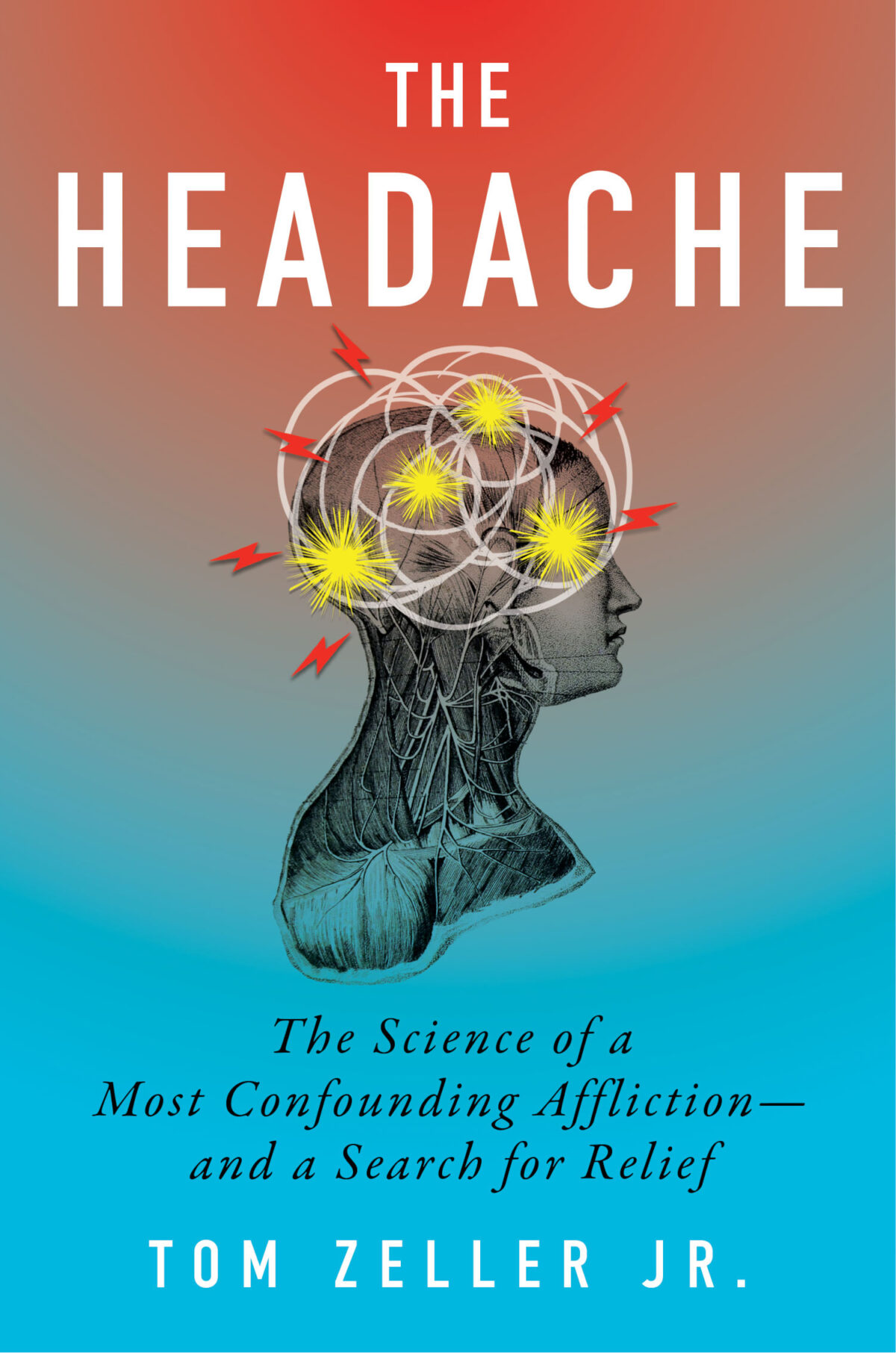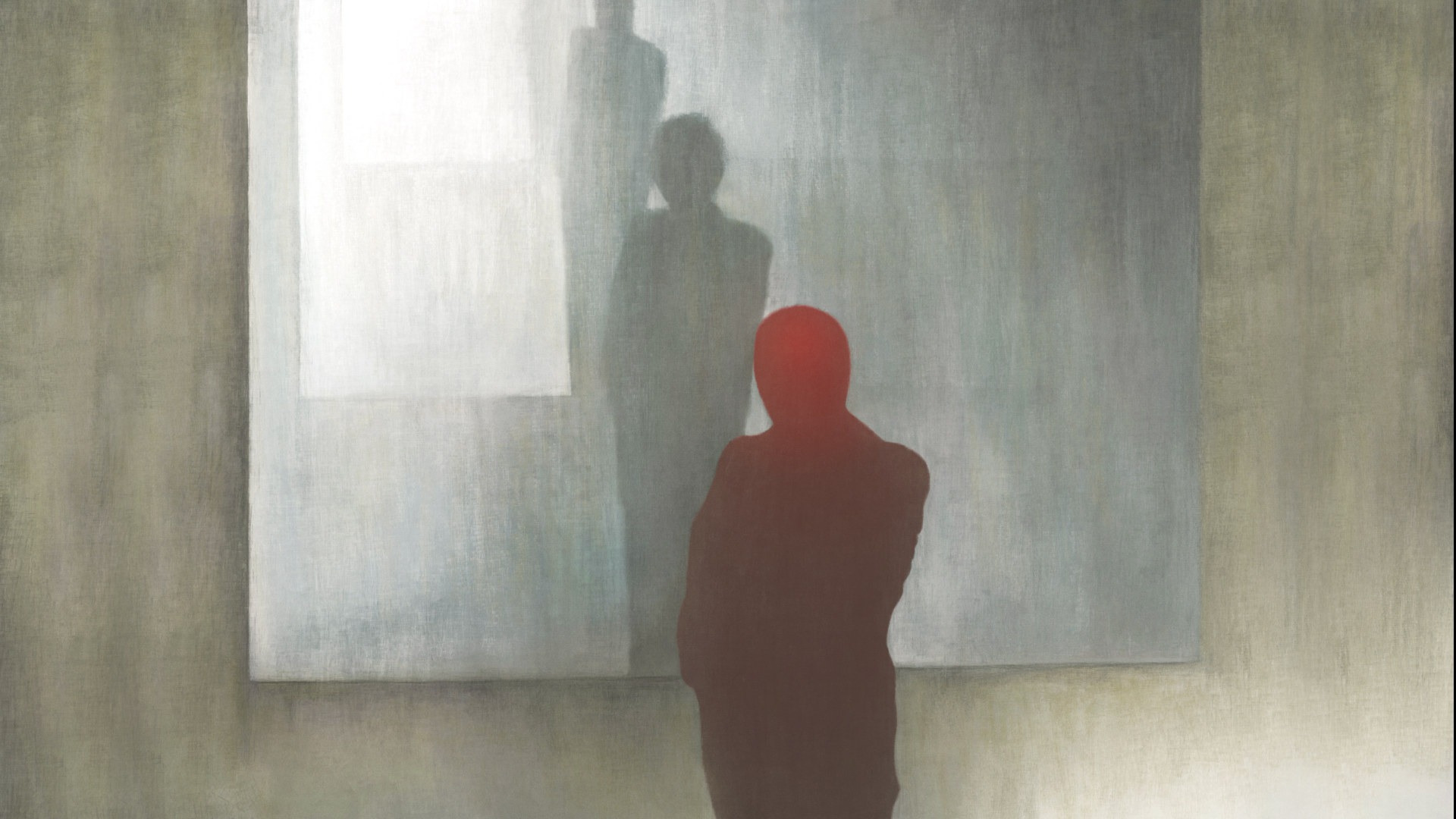During the week between two experimental infusions at the Danish Headache Center, where I had agreed to be a test subject, I rented a small flat in central Copenhagen, near Assistens Cemetery. This is where many notable Danes have been laid to rest, and I took some time that September to visit the monuments, which were shrouded in manicured stands of mature poplars and willows.

The accompanying article is adapted from “The Headache: The Science of a Most Confounding Affliction — and a Search for Relief,” by Tom Zeller Jr. (Mariner Books, 310 pages). Copyright © 2025. Reprinted by permission.
The grave of Niels Bohr, one of the 20th century’s leading figures in theoretical physics, is marked by a gray stone pillar with an owl perched on top. Hans Christian Andersen, the author who gave us “The Little Mermaid” and “The Ugly Duckling,” among other treasured stories, resides here too. But it felt most appropriate to my mission that Danish philosopher Søren Kierkegaard, who thought suffering was where life’s meaning is forged, occupied his own leafy corner of the park.
In the Kierkegaardian tradition, suffering is redemptive — the feedstock of enlightenment — and rather than wallow in its insults and pains, the sufferer should embrace its power to transform. “Even the heaviest suffering cannot be heavier than a mountain,” he once wrote. “And thus, if the sufferer believes that his suffering is beneficial to him — yes, then he moves mountains. In order to move a mountain, you must get under it.”
I was thinking of Kierkegaard when I first presented my arm to Lanfranco Pellesi, then a researcher at the Danish Headache Center, for my initial infusion. Pellesi had an early interest in studying near-death experiences, before turning his attention to pain, and then from pain to headaches. It struck me as such an obvious trajectory — one that followed an almost inevitable path — and I asked him how he made sense of that progression. “I think probably it links to the problem of conscience — where it is, where it’s not.”
In her 2014 book “Not Tonight: Migraine and the Politics of Gender and Health,” Rutgers University sociologist Joanna Kempner describes the all-important locus of headache pain:
Headaches strike a central feature of personhood. The head is an area of particular cultural sensitivity in which to experience pain. In a modern Western landscape fundamentally shaped by the Cartesian dictum “I think, therefore I am,” the head is often considered the center of personality. The head houses the brain and can be used to describe the seat of the faculty or reason, as in “she calculated it in her head,” or as a metaphor for mental ability or aptitude: “he has a good head for strategy.” The head is also used to indicate authority; a person who leads or is in charge is referred to as “head of an organization,” and political leaders are often called “heads of state.” The “head of the household” sits at the “head of the table.” The head is so essential in Western understandings of personhood that an individual’s existence or job is often reduced to the synecdoche of the head: — “it cost him his head.”
These insights capture something I had long pondered for myself: Why does a severe headache — from the grind of a migraine and its kaleidoscopic sensory symptoms, to the searing cluster attack that throws a person into fits of rocking and pacing — why do these feel so categorically different from any other kind of physical anguish?
As a runner, I’ve had grim surgeries performed on my knee, and more recently (and extensively) on my ankle. In the latter case, absent the caress of opioids, the pain in the days immediately following the procedure was extraordinary. And yet it always had a remoteness to it — a geographical distance across the expanse of the body that made it less of a threat. It was menacing, to be sure, but it was also “down there,” while I remained “up here.” Excruciating pain in the head, though — deep inside the very nub of the self — always seemed to collapse that sense of separation.
There are some physiological aspects to pain generation that ally with this sensibility. Virtually every other part of the body capable of feeling pain passes its noxious signals through the spinal cord. You accidentally place your finger on a red-hot stove burner, and nociceptors activate. These nerve endings are found in your skin and throughout the body, inside and out, and are uniquely designed to detect tissue damage from mechanical insults (a thorn tearing your skin, or the tendons in your ankle twisting the wrong way); thermal threats (a hot burner); or chemical hazards (think stomach acid slipping out of your stomach and causing heartburn).

In this case, nociceptors in your finger generate an electrical signal that travels along the axon and, in a series of synaptic hops from one neuron to another, neurotransmitters carry that signal toward the dorsal horn of the spinal cord. Second-order neurons in the spine modulate that signal — amplifying it if the stimuli remains, for example, or inhibiting it if the threat has receded — and then send the message upward to the thalamus, the brain’s relay station for most sensory and motor signals.
The thalamus then distributes the signals to the appropriate parts of the brain, where they mingle with billions of other ongoing signals and bits of stored data — other events unfolding immediately around you, distant memories, emotional states — and then the brain responds. It will very likely send an immediate motor signal down a descending pathway, and along with a reflex that originates in the spinal cord itself, cause you to jerk your hand away before you can even think about it. It will also provide you with the sensation of pain, perceived at the site of the incident.
Its intensity will be determined by a complex mix of factors: the temperature of the burner; the amount of tissue damage; whether you’ve been dumb enough to put your finger on a hot burner before; whether you were feeling sad or happy at the moment you did this dumb thing; and even whether you are being intensely distracted in that moment by, say, a cat video on TikTok.
When operating normally, the whole complex of pain sensation and processing — a biopsychosocial phenomenon without which we would never survive — is a fine-tuned system. No two people will likely experience pain in the same way, given the unique, cumulative cache of data stored in each brain, and the many variations in our individual anatomies. You may have more or fewer nociceptors than I do, for example, or mine might be better at transporting certain messenger molecules. But everyone will benefit from the efficiency and expediency of nociception — and most people are going to get a sharp bite from that burner.
Talk to people who have experienced excruciating head pain and the struggle to articulate its uniqueness, to identify a useful metaphor, begins.
Still, the process of nociception described here, which governs virtually everything from a stubbed toe to a tummy ache, and a stab wound to a strained muscle, doesn’t work quite the same way in the head. Sensory signals from the head and face primarily travel through the trigeminal nerve, while the glossopharyngeal nerve and the vagus nerve transmit sensory signals from the ears, throat, and certain parts of the neck. They all plug directly into the brain stem — making them, at least anatomically, distinct from every other pain-sensitive tissue of the body.
Whether or not that offers the pain arising in these regions a distinct quality or aspect might well be a psychological question, or even a philosophical one. But rob that pain of one other crucial aspect — tissue damage — and it begins to acquire an almost apparitional character.
Talk to people who have experienced excruciating head pain — not on the surface, not on the scalp, and not from a punch to the nose, an infection in the ear, or an ill-advised chili pepper, but spontaneous pain deep inside the head — and the struggle to articulate its uniqueness, to identify a useful metaphor, begins. The pain is nowhere and everywhere, innate but foreign. It’s a mirror reflecting a mirror, an infinite echo that recedes unto itself but never leaves. When the pain gets that close to the line that divides me from everything else, or even crosses it, where is the pain anymore? Where is it in relation to me?
I sometimes liken this conundrum to the experience of a 360-degree photograph, that wonder of the digital age that allows you to pan around an image’s frozen, spherical moment in all directions. You see them sometimes in virtual tours of homes for sale, or in Google’s “street view” function. Click and drag the image, and it’s as if you are in some snow-globe version of that captive scene, able to peer not just left and right, but skyward and downward, in a hunt for all the details hiding at the periphery.
The pain is nowhere and everywhere, innate but foreign. It’s a mirror reflecting a mirror, an infinite echo that recedes unto itself but never leaves.
The illusion breaks down, though, when you pan too far inward, to that place where the gaze of the lens could not reach because it cannot turn on itself. Here you’ll typically see a distortion — a shadow cut in half, maybe, or pixels that don’t line up. To me, this is where the details of head pain often seem to reside — in that unphotographable nadir that I can never turn far enough to see, its existence implied only by a gap.
It’s clumsy and imperfect, I know. This type of pain, the one that invades the seat of the self, evades words. “It does so, in part, because it shuts down and then vandalizes brain space, inhibits and even lays waste to the parts of consciousness that think and shape and speak,” writes Andrew Levy, a professor of English at Butler University in Indiana and the author of the 2009 book “A Brain Wider Than the Sky: A Migraine Diary.”
“But it also does so because of pain’s social contract: pain is the surest thing in the world to the person feeling it, and the least sure thing to the person hearing about it,” he continues, “and that’s a bad deal all around.”










